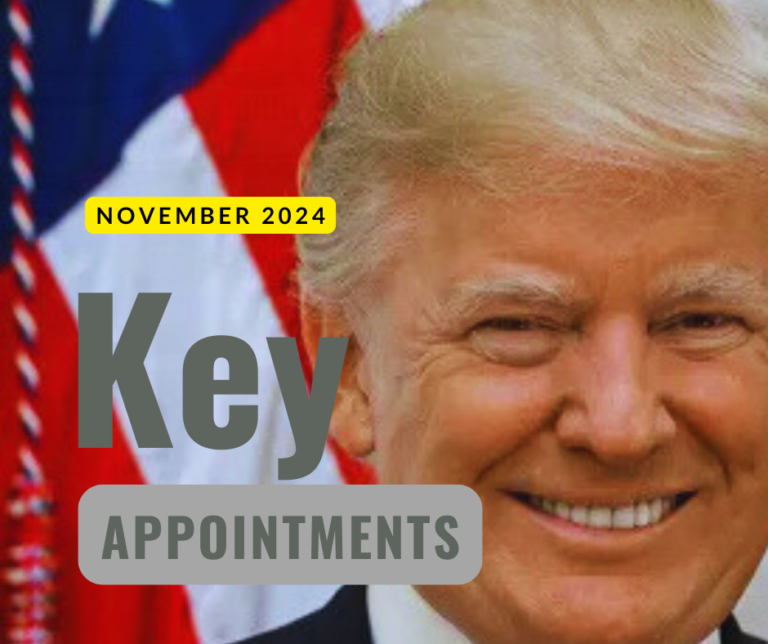
President-Elect Donald Trump’s Transition Plans:
In the wake of his victory in the 2024 presidential election, President-elect Donald Trump is moving swiftly to assemble his administration and prepare for his upcoming term in office. With the inauguration just months away, Trump has already begun laying the foundation for his leadership team, signaling his readiness to govern. A key development in this transition period has been the announcement of several top appointments, including the highly significant role of White House Chief of Staff, which Trump has entrusted to Susie Wiles.
Susie Wiles, a seasoned political strategist and close ally of Trump, has been an influential figure in his campaign and prior political efforts. Her appointment as Chief of Staff is seen as a strategic move to bring stability and direction to the administration’s day-to-day operations. Wiles has long been a trusted advisor, known for her organizational skills and ability to navigate the complexities of political campaigns and government. In her new role, she will be responsible for managing the President’s schedule, coordinating with cabinet members and staff, and ensuring the effective execution of Trump’s policy initiatives.
Beyond the key appointments, Trump’s transition team is working diligently to prepare the broader framework for his second term in office. Policy planning has become a central focus, with an emphasis on addressing the priorities Trump outlined during his campaign. The team is likely concentrating on key issues such as economic recovery, immigration reform, and national security. Economic growth, in particular, is expected to take center stage, as Trump has pledged to bring jobs back to the U.S., reduce regulations, and stimulate industry to tackle the economic challenges that many voters expressed concern over during the election.
As the transition progresses, Trump’s team is also engaging with Congress and other governmental agencies to ensure a smooth handover of power. This process involves complex coordination to brief incoming officials on ongoing policies and ensure continuity in critical areas such as defense, health, and foreign policy. Additionally, the Trump team is likely mapping out executive orders and legislative proposals that will be introduced early in the new administration, aiming to make a swift impact once in office.
Voter Sentiment:
The results of the 2024 presidential election were shaped in large part by widespread voter dissatisfaction with the current state of the nation. Exit polls and surveys conducted during the election revealed that nearly 70% of voters believe the U.S. is headed in the wrong direction, a sentiment that appeared to cut across party lines and reflect deep concern over the nation’s trajectory. Economic uncertainty was at the forefront of these concerns, with a significant portion of the electorate citing economic issues as their primary reason for seeking change.
Voters identified inflation, wage stagnation, unemployment, and the high cost of living as pressing issues that influenced their votes. Many expressed frustration with the slow pace of economic recovery and the financial strain on American families. This dissatisfaction played a pivotal role in voter turnout, as many sought a leader who could address these challenges and implement tangible solutions to revitalize the economy.
Additionally, the polls highlighted a desire for significant policy shifts in areas beyond the economy, including immigration, healthcare, and education. Many voters felt that existing policies were inadequate to address the complex social and economic issues facing the country. For some, concerns over border security and immigration reform were decisive factors, as they believed stronger enforcement and clearer policies would better protect American jobs and resources.
The sense of discontent was not limited to economic or social policies alone. A broader concern over leadership and governance also emerged, with voters expressing frustration over the political climate in Washington. There was a widespread feeling that partisan gridlock and political infighting had stalled progress on key issues. Voters appeared eager for decisive action, a clear vision, and leadership that could rise above the dysfunction of recent years.
For many, Trump’s message of restoring economic prosperity, enforcing law and order, and returning power to the people resonated. His campaign successfully tapped into the prevailing mood of frustration and desire for change. With the majority of voters indicating dissatisfaction with the direction of the country, the 2024 election became a referendum on the current state of affairs and a mandate for the incoming administration to take bold action.
Trump’s victory can be seen as a response to this strong desire for change, with many voters believing that his leadership will steer the country in a new direction. As he prepares to take office, the pressure is on his administration to deliver results that address these economic and social concerns, as well as to restore confidence in the nation’s future. With the electorate expecting quick and effective responses to the challenges facing the country, the upcoming term is likely to focus heavily on job creation, economic stability, and strengthening national security.
The 2024 election reflected not just a shift in political power, but a broader sense of urgency among the American people for meaningful change in the policies and leadership guiding the nation. As Trump moves forward with his transition plans, his administration will face the task of responding to these demands and charting a path forward that can restore faith in the country’s trajectory.


